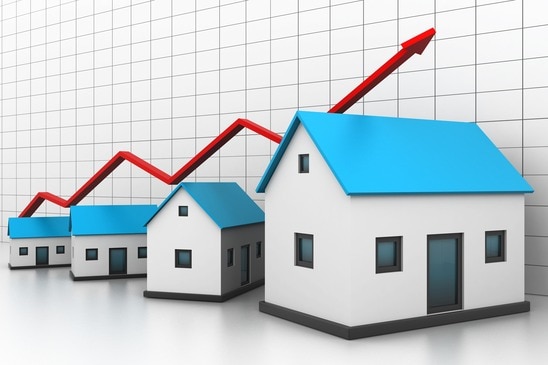First the good news: A decade after banks clamped down on the easy-money practices that led to the mortgage crisis, lenders are starting to loosen up a bit. Credit availability increased in December for the fourth consecutive month, reaching its highest level since 2008, according to the Mortgage Bankers Association. It could loosen up still more this year if President Trump follows through on deregulation promises.
But even as credit expands, the cost of buying a home is going up. Rising interest rates, coupled with escalating home prices, have pushed affordability to its lowest point since 2010. Monthly mortgage payments required to purchase a median-priced home went up 10% in the fourth quarter of 2016, according to Black Knight. A separate survey Berkshire Hathaway HomeServices found that 76% of homeowners and 79% of prospective buyers cite interest rates as a challenge in the current market.
If you’re on the hunt for a mortgage or want to refinance, follow these steps to get the best deal now.
Lock In Low Rates
Despite their post-election spike, rates remain low. The Mortgage Bankers Association projects that interest on a 30-year fixed loan, currently around 4.2% (vs. a recent low of 3.4% in August 2016), could go up another half a percentage point by year’s end (see chart below).

That means refinancers should get their applications in sooner rather than later. You shouldn’t continue holding out for a lower rate. If you’re a buyer, move quickly when you find the right place. In either case, consider locking in the rate for 60 days. If the rate goes up just a quarter of a percentage point, you’ll save more than the rate-lock fee in the first year of payments.
Apply Both Online and in Person
Nonbank online lenders now make up about half the mortgage market. The streamlined application process requires less paperwork, and you may find better rates than you would with a brick-and-mortar lender.
Even if you end up opting for the personalized attention you can get from your local bank or credit union, online lenders may still give you ammo for negotiations. “There is more competition in the mortgage marketplace now, and you can certainly use that to your advantage,” says Daren Blomquist, senior vice president with real estate data company Attom Data Solutions.
Think Beyond 30-year Fixed
Adjustable-rate mortgages got a bad rap during the housing bust, but even with rates on the rise, going with an ARM—which offers a low fixed rate for a set number of years before gradually resetting—may make sense for refinancers looking to keep payments low or buyers with a shorter time horizon.
“If a buyer is purchasing their first home and anticipates moving up to a larger home in the next five to seven years, they should really look at the intermediate ARM products, such as a 5/1 or 7/1 adjustable,” says Burns. Doing so can yield significant short-term savings: The rate on a 5/1 ARM currently stands at 3.23%.
Know How Low You Can Go
One in five borrowers today uses a Federal Housing Authority loan to make a purchase. Such loans are an appealing option because borrowers with a credit score of at least 580 can qualify with a down payment of just 3.5%. The catch is that as a higher-risk borrower, you’ll have to pay mortgage insurance premiums upfront and on top of your interest every month. That 0.85% premium—Trump nixed a plan to reduce it to 0.6% on his first day in office—remains for the life of the loan, in most cases.
If you can qualify, you might be better off going with a low-down-payment conventional loan, since the mortgage insurance on that type of loan is typically canceled when you reach 20% equity. There are more low-down-payment options available now. It’s definitely an area to talk to your lender about.





